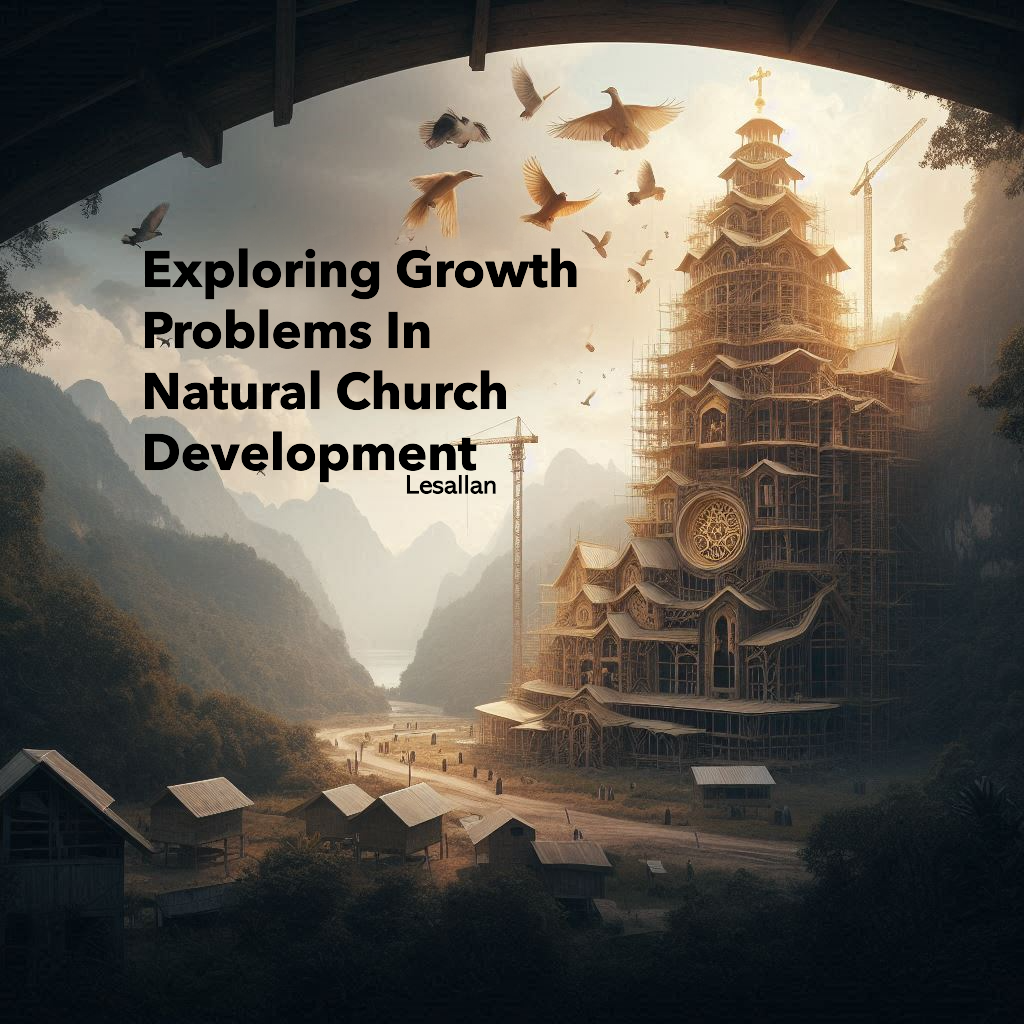Lesallan – November 11, 2024

Exploring Growth Patterns in Natural Church Development
In his work, Schwarz (2007) describes natural church development (NCD) as a “story of God’s grace” (p. 14). This concept delves into principles derived from global research on churches, highlighting how a deeper understanding of these principles can promote church growth and development. The text outlines five early growth patterns that serve as a framework for exploring different strategies to encourage church growth. The identified patterns consist of the faithfulness pattern, the breakthrough pattern, the model pattern, and the management pattern.
The faithfulness pattern underscores the significance of consistency and dedication to God’s work. Churches that adhere to this model prioritize long-term commitment and dependability, ensuring that their actions are in harmony with their faith values. This approach emphasizes steadfastness and a lasting presence within the community rather than seeking rapid expansion. It also highlights the importance of being faithful stewards of the resources and responsibilities entrusted to them.
The breakthrough pattern, in contrast, pertains to achieving significant and transformative changes within the church. This pattern is marked by instances of intense growth or renewal that dramatically shift the church’s trajectory. Breakthroughs often arise from fervent prayer, strategic planning, or divine intervention. Churches that undergo breakthroughs may experience sudden increases in membership, spiritual revival, or the successful implementation of new initiatives.
The model pattern pertains to churches that exemplify effective ministry practices. These congregations often serve as benchmarks or role models for others looking to enhance their operations. By studying and emulating the successful strategies employed by model churches, other congregations can gain valuable insights and tailor these practices to fit their distinct contexts.
The management paradigm in church growth emphasizes the significance of administrative and organizational dimensions. This paradigm entails a systematic approach to planning, the strategic allocation of resources, and the implementation of effective leadership practices. Institutions that demonstrate proficiency within this paradigm place a premium on organizational health, thereby ensuring that their frameworks and operational processes facilitate sustainable growth and development.
Among these patterns, I find a strong alignment with the faithfulness pattern. This connection arises from my deep appreciation for the steady and consistent work that lays a solid foundation for long-term impact. While transformative breakthroughs and exemplary models hold significant value, I believe that the everyday commitment to faithfulness in the ministry truly resonates with my understanding of effective church growth. It is through persistent and dependable efforts that a church can cultivate genuine relationships, build trust within the community, and create enduring change.
Schwarz (2007) introduces a principle-oriented approach that emphasizes the necessity of tailoring universal principles to fit the exclusive context of each church, rather than be dependent on a one-size-fits-all strategy. This method acknowledges that every congregation is unique, with its own strengths, challenges, and cultural dynamics. By prioritizing principles such as quality over quantity, leadership development, and community engagement, churches can customize their growth strategies to align with their specific circumstances and needs.
In summary, grasping the five growth patterns identified by Schwarz (2007) in Natural Church Development offers invaluable insights into diverse strategies for church growth. Whether through steadfast faithfulness, pivotal breakthrough moments, serving as a model for others, or through effective management, congregations can adopt approaches that resonate with their distinct contexts and strengths. By embracing a principle-oriented methodology, churches can further adapt these patterns in ways that foster sustainable and meaningful growth, thereby fulfilling their mission within the community.
Blessings,
Lesallan
References:
Schwarz, C. (2007). Color your world with natural church development: Experiencing all that God has
designed you to be. St. Charles, IL: Church Smart Resources.



3 Comments
Instagram Bio for Boys · November 22, 2024 at 6:07 am
“Amazing post, keep up the good work!”
hdhub4uin · November 22, 2024 at 2:03 pm
I do believe all the ideas youve presented for your post They are really convincing and will certainly work Nonetheless the posts are too short for novices May just you please lengthen them a little from subsequent time Thanks for the post
Sonny Damewood · November 26, 2024 at 11:38 am
I have recently started a website, the information you provide on this site has helped me greatly. Thank you for all of your time & work.
Comments are closed.